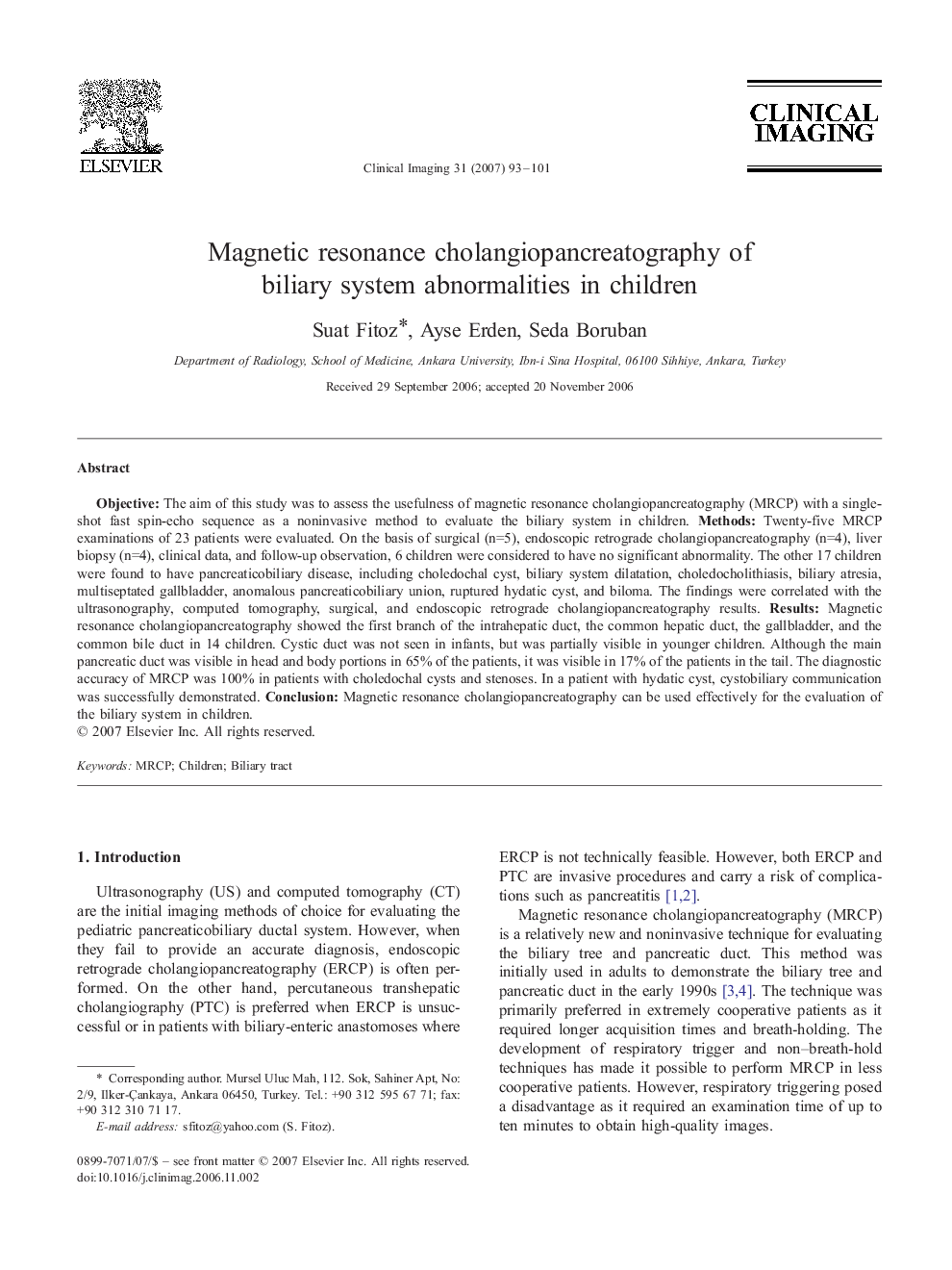| Article ID | Journal | Published Year | Pages | File Type |
|---|---|---|---|---|
| 4222759 | Clinical Imaging | 2007 | 9 Pages |
ObjectiveThe aim of this study was to assess the usefulness of magnetic resonance cholangiopancreatography (MRCP) with a single-shot fast spin-echo sequence as a noninvasive method to evaluate the biliary system in children.MethodsTwenty-five MRCP examinations of 23 patients were evaluated. On the basis of surgical (n=5), endoscopic retrograde cholangiopancreatography (n=4), liver biopsy (n=4), clinical data, and follow-up observation, 6 children were considered to have no significant abnormality. The other 17 children were found to have pancreaticobiliary disease, including choledochal cyst, biliary system dilatation, choledocholithiasis, biliary atresia, multiseptated gallbladder, anomalous pancreaticobiliary union, ruptured hydatic cyst, and biloma. The findings were correlated with the ultrasonography, computed tomography, surgical, and endoscopic retrograde cholangiopancreatography results.ResultsMagnetic resonance cholangiopancreatography showed the first branch of the intrahepatic duct, the common hepatic duct, the gallbladder, and the common bile duct in 14 children. Cystic duct was not seen in infants, but was partially visible in younger children. Although the main pancreatic duct was visible in head and body portions in 65% of the patients, it was visible in 17% of the patients in the tail. The diagnostic accuracy of MRCP was 100% in patients with choledochal cysts and stenoses. In a patient with hydatic cyst, cystobiliary communication was successfully demonstrated.ConclusionMagnetic resonance cholangiopancreatography can be used effectively for the evaluation of the biliary system in children.
